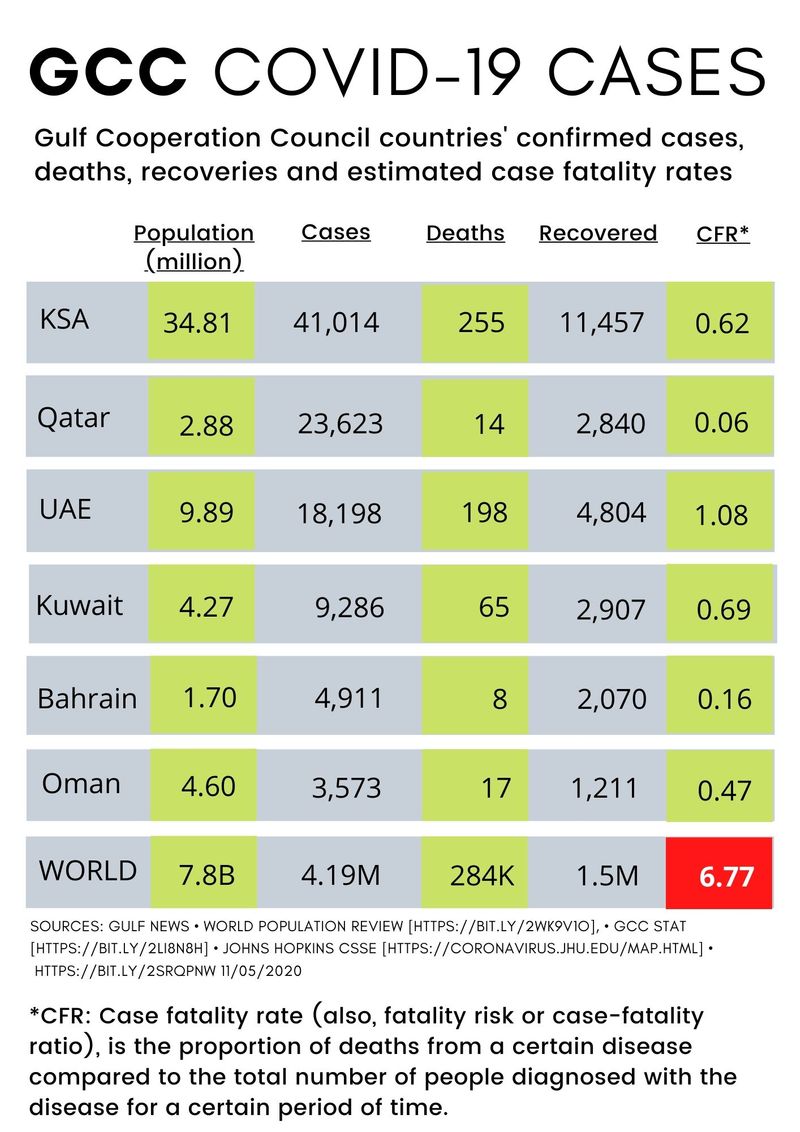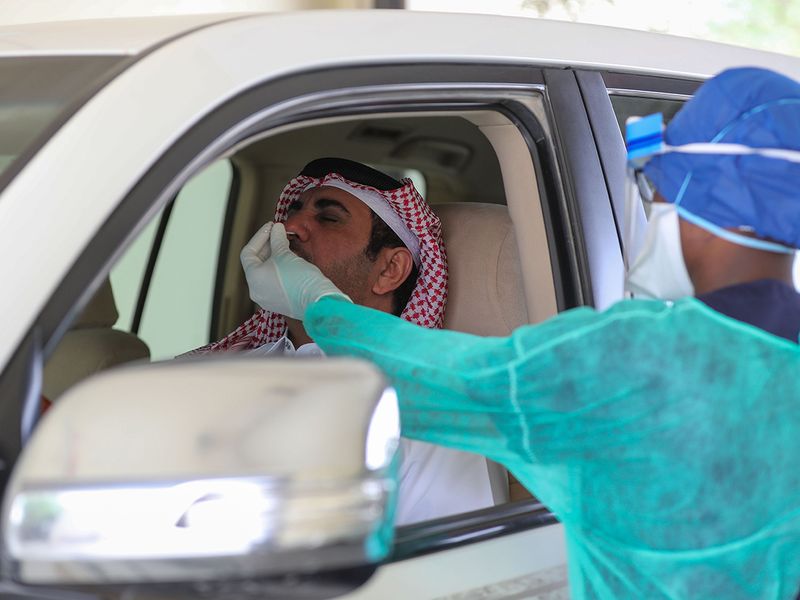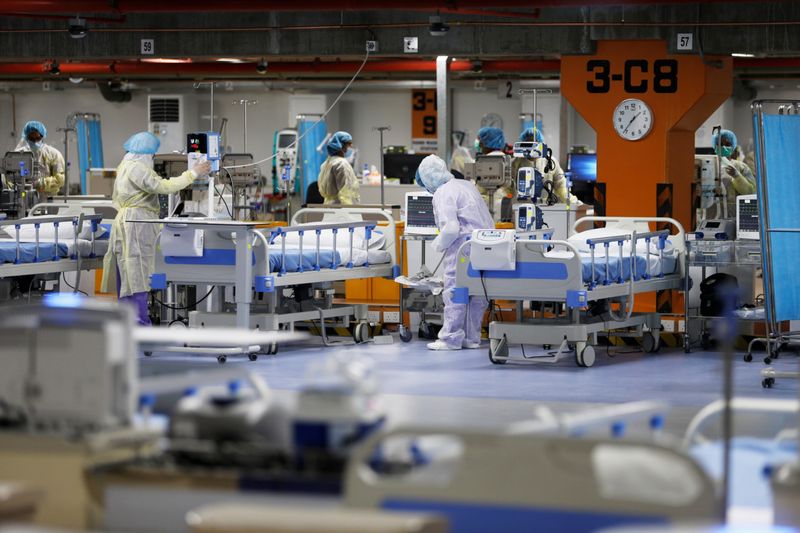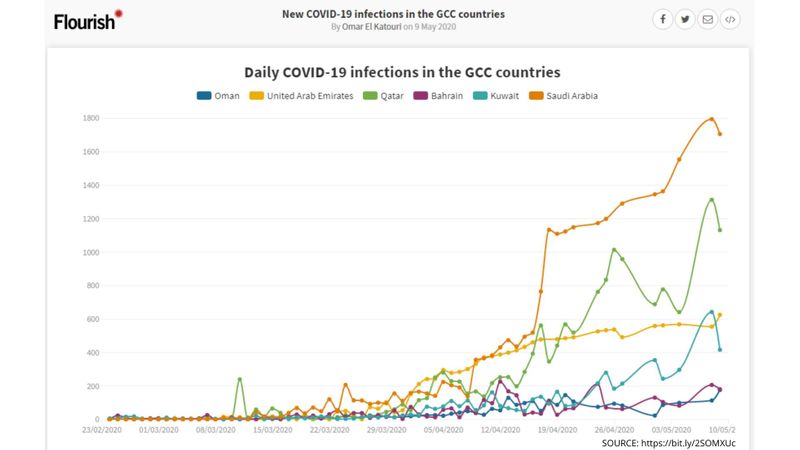Battling the ‘pandemic of misinformation’ The sheer volume of COVID-19 misinformation and disinformation online is “crowding out” the accurate public health guidance, “making our work a bit more difficult” ........... “Misinformation could be an honest mistake or the intentions are not to blatantly mislead people,” like advising others to eat garlic or gargle with salt water as protection against COVID-19 ......... create fake content, like a video purporting to show the Chinese government executing residents in Wuhan with COVID-19 or “Plandemic,” a film claiming the pandemic is a ruse to coerce mass vaccinations ............ “When the president says disinfectants … or anti-malaria drugs are one way to treat COVID-19, and other people say, ‘No, that’s not the case,’ the public is hard-pressed to start wondering, ‘If the authorities cannot agree, cannot make up their minds, why should I trust anybody?’” ........... At many major news outlets, reporters and editors with no medical or public health training were reassigned to cover the unfolding pandemic and are scrambling to get up to speed with complex scientific terminology, methodologies, and research, and then identify, as well as vet, a roster of credible sources. Because many are not yet knowledgeable enough to report critically and authoritatively on the science, they can sometimes lean too heavily on traditional journalism values like balance, novelty, and conflict. In doing so, they lift up outlier and inaccurate counterarguments and hypotheses, unnecessarily muddying the water. ............. “The idea of covering the science in a two-sided way on areas where there really isn’t any disagreement has struck me as very, very odd, and it keeps coming up over and over again.” ........... right-leaning media outlets, which have largely repeated news angles and viewpoints promoted by the White House and the president on the progress of the pandemic and the efficacy of the administration’s response, boosting unproven COVID-19 treatments and exaggerating the availability of testing and safety equipment and prospects for speedy vaccine development. ........... what’s coming from Fox News and other pro-Trump media goes well beyond misinformation
........ Whether downplaying the views of government experts on COVID-19’s lethality, blaming China or philanthropist Bill Gates for its spread, or cheering shutdown protests funded by Republican political groups, it’s all part of “an active disinformation campaign,” she said, aimed at deflecting the president’s responsibility as he wages a reelection campaign. ....... Over time, bubble dwellers can become cocooned in a media echo chamber that not only feeds faulty information to audiences, but anticipates criticisms in order to “prebut” potential counterarguments that audience members may encounter from outsiders, much the way cult leaders do. .............. “It’s not enough to introduce new pieces of evidence. You have to break through their strategies to diminish that counterevidence, and that’s a much harder thing to do than merely exposing people to different perspectives” ............... Many cognitive biases get in the way of even the best truth-seeking strategies, so perhaps we could all benefit from a little more intellectual humility in this time of such great uncertainty
How far are we from a vaccine? Depends on who ‘we’ is If “we” are healthy volunteers willing to be inoculated to see whether an experimental vaccine works, the answer is that some are already getting it, and more will be enrolled in the coming months. Once an effective solution emerges, hopefully by early next year, it may take another six to eight months to reach priority populations like U.S. health care workers and first responders. Other essential workers, including those toiling for low wages in grocery stores and food production, should not be forgotten ......... “If ‘we’ is a person in Burkina Faso, or Laos, and [they are] expecting to see a vaccine in the next three years, I would be very surprised [if they see it]”
......... The Trump administration, for instance, skipped a meeting of global leaders late last month called to get them to commit to distribute any future vaccine in an equitable way and declined this week to attend a fundraising conference by the European Union to coordinate vaccine efforts. The head of one of the world’s largest vaccine processing operations in India said in a recent media report that any vaccine it produces will go to protect India’s population before doses are sent abroad. ....... “I’ve not seen anything like this in my entire career. This is moving at lightning speed” ........... giving the drug to patients earlier in the course of their illness may make an even more significant impact. .......... when social distancing is relaxed, plans must be in place for a possible resurgence of infections.
The coronavirus update
COVID-19 cure: ‘Just a breath away’ How Gulf countries are managing contagion, leading search for cure .......... Dubai confirmed the first coronavirus case on January 29, 2020 (a 73-year-old Chinese tourist from Wuhan), the first confirmed case in the Gulf, and wider Middle East region ........ On Monday (May 11, 2020), the total coronavirus cases in the six Gulf Cooperation Council (GCC) states crossed the 100,000 mark ......... Pre-COVID-19, Gulf cities were vibrant, busy. For one, each year, Saudi Arabia welcomes millions of pilgrims to Mecca and Madinah from around the world — a mass movement of the faithful on a journey of a lifetime unbroken over the centuries, until the virus came. ........ Pre-COVID, Dubai International, the world’s busiest airport in terms of international passengers, was clocking in more than 1,000 aircraft movements daily. ........ Massive COVID-19 testing has been rolled out, drive-through test centres have been set up across the UAE and other Gulf countries. ....... Saudi Arabia’s Health Minister Dr Tawfig al-Rabiah warned that the number of cases could hit up to 200,000 within weeks ......... The large number of cases from Iran prompted Bahraini officials to accuse the Iranian government of “biological aggression”.
.......... The Omani minister of health warned that the country was about to see a spike in cases. ........ March 20: Qatar places its largest labour camp for migrant workers in total lockdown after hundreds of construction workers became infected with COVID-19. ........ March 31: Saudis urge more than one million Muslims intending to perform Haj to put plans for 2020 on hold. ........ April 5: Two aid planes carrying medical supplies fly from UAE to Pakistan. .......... April 15: Field hospital at Dubai World Trade Centre opens with a capacity to treat 3,000 COVID-19 patients. Dubai Police use 3D printing, provides 1,000 3D-printed face shields to frontline personnel. ........ April 18: UAE gets 5.5 million hydroxychloroquine pills from India. .......... April 21: UAE’s aid planes carry approximately 260 tonnes of medical and food aid to 24 countries in the region and beyond since the outbreak of pandemic COVID-19. ........ May 2: The UAE sends an aid plane containing seven metric tonnes of medical supplies to India to bolster the country's efforts to curb the coronavirus crisis.
Doctors keep discovering new ways the coronavirus attacks the body Damage to the kidneys, heart, brain — even ‘covid toes’ — prompts reassessment of the disease and how to treat it ...... Deborah Coughlin was neither short of breath nor coughing. In those first days after she became infected by the novel coronavirus, her fever never spiked above 100 degrees. It was vomiting and diarrhea that brought her to a Hartford, Conn., emergency room on May 1. ...... “You would have thought it was a stomach virus,” said her daughter, Catherina Coleman. “She was talking and walking and completely coherent.” ......... But even as Coughlin, 67, chatted with her daughters on her cellphone, the oxygen level in her blood dropped so low that most patients would be near death. .......
a strange constellation of symptoms that physicians are racing to recognize, explain and treat
......... Today, there is widespread recognition the novel coronavirus is far more unpredictable than a simple respiratory virus. Often it attacks the lungs, but it can also strike anywhere from the brain to the toes. ....... The World Health Organization’s database already lists more than 14,600 papers on covid-19. Even the world’s premier public health agencies, including the Centers for Disease Control and Prevention, have constantly altered their advice to keep pace with new developments. ........
“Bottom line, this is just so new that there’s a lot we don’t know.”
........ the pathogen does much more than invade the lungs ........ It attacks the heart, weakening its muscles and disrupting its critical rhythm. It savages kidneys so badly some hospitals have run short of dialysis equipment. It crawls along the nervous system, destroying taste and smell and occasionally reaching the brain. It creates blood clots that can kill with sudden efficiency and inflames blood vessels throughout the body. ........
It can begin with a few symptoms or none at all, then days later, squeeze the air out of the lungs without warning. It picks on the elderly, people weakened by previous disease, and, disproportionately, the obese.
It harms men more than women, but there are also signs it complicates pregnancies. ........... It mostly spares the young. Until it doesn’t ..... “We were all thinking this is a disease that kills old people, not kids” ......... Of the millions, perhaps billions, of coronaviruses, six were previously known to infect humans. ....... Four cause colds that spread easily each winter, barely noticed. Another was responsible for the outbreak of severe acute respiratory syndrome that killed 774 people in 2003. Yet another sparked the outbreak of Middle East respiratory syndrome in 2012, which kills 34 percent of the people who contract it. But few do. ..............
SARS-CoV-2, the bad seed of the coronavirus family, is the seventh. It has managed to combine the infectiousness of its cold-causing cousins with some of the lethality of SARS and MERS.
...... At the moment, social distancing is the only effective countermeasure. .......
It has infected 4 million people around the globe, killing more than 280,000 ...... In the United States, 1.3 million have been infected and more than 78,000 have died.
........ Experts say it will be years until it is understood how the disease damages organs and how medications, genetics, diets, lifestyles and distancing impact its course. ......... “We had to rapidly learn how this virus impacts the human body and identify ways to treat it literally in a time-scale of weeks. With many other diseases, we have had decades.” ......... In the initial days of the outbreak, most efforts focused on the lungs. SARS-CoV-2 infects both the upper and lower respiratory tracts, eventually working its way deep into the lungs, filling tiny air sacs with cells and fluid that choke off the flow of oxygen. ..........
the virus directly targets the endothelial cells that line blood vessels.
........... Inflammation of those endothelial cells lining blood vessels may help explain why the virus harms so many parts of the body .......
“Our hypothesis is that covid-19 begins as a respiratory virus and kills as a cardiovascular virus.”
......... Once inside a cell, the virus replicates, causing chaos. ACE2 receptors, which help regulate blood pressure, are plentiful in the lungs, kidneys and intestines — organs hit hard by the pathogen in many patients. ....... “The virus can attack a lot of different parts of the body, and we don’t understand why it causes some problems for some people, different problems for others — and no problems at all for a large proportion”





How Pandemics End An infectious outbreak can conclude in more ways than one, historians say. But for whom does it end, and who gets to decide? ......... According to historians, pandemics typically have two types of endings: the medical, which occurs when the incidence and death rates plummet, and the social, when the epidemic of fear about the disease wanes. .......... “As we have seen in the debate about opening the economy, many questions about the so-called end are determined not by medical and public health data but by sociopolitical processes.” .........
Endings “are very, very messy”
.......... When a young man arrived in the emergency room from a country with Ebola patients, no one wanted to go near him; nurses hid, and doctors threatened to leave the hospital. ....... “If we are not prepared to fight fear and ignorance as actively and as thoughtfully as we fight any other virus, it is possible that fear can do terrible harm to vulnerable people, even in places that never see a single case of infection during an outbreak. And a fear epidemic can have far worse consequences when complicated by issues of race, privilege, and language.” ............ Bubonic plague has struck several times in the past 2,000 years, killing millions of people and altering the course of history. ........ The medieval pandemic began in 1331 in China. The illness, along with a civil war that was raging at the time, killed half the population of China. From there, the plague moved along trade routes to Europe, North Africa and the Middle East. In the years between 1347 and 1351, it killed at least a third of the European population. Half of the population of Siena, Italy, died.... The dead were buried in pits, in piles. ...........
“No more respect was accorded to dead people than would nowadays be accorded to dead goats.”
Some hid in their homes. Others refused to accept the threat. Their way of coping, Boccaccio wrote, was to “drink heavily, enjoy life to the full, go round singing and merrymaking, and gratify all of one’s cravings when the opportunity emerged, and shrug the whole thing off as one enormous joke.” .......... That pandemic ended, but the plague recurred. One of the worst outbreaks began in China in 1855 and spread worldwide,
killing more than 12 million in India alone
. Health authorities in Bombay burned whole neighborhoods trying to rid them of the plague. “Nobody knew if it made a difference” ................ Among the diseases to have achieved a medical end is smallpox. But it is exceptional for several reasons: There is an effective vaccine, which gives lifelong protection; the virus, Variola minor, has no animal host, so eliminating the disease in humans meant total elimination; and its symptoms are so unusual that infection is obvious, allowing for effective quarantines and contact tracing. ............ Epidemic after epidemic swept the world, for at least 3,000 years. Individuals infected with the virus developed a fever, then a rash that turned into pus-filled spots, which became encrusted and fell off, leaving scars. The disease killed three out of 10 of its victims, often after immense suffering. ........... The last person to contract smallpox naturally was Ali Maow Maalin, a hospital cook in Somalia, in 1977. He recovered, only to die of malaria in 2013. ........
The 1918 flu is held up today as the example of the ravages of a pandemic and the value of quarantines and social distancing. Before it ended, the flu killed 50 million to 100 million people worldwide.
............ In the Hong Kong flu of 1968, one million people died worldwide, including 100,000 in the United States, mostly people older than 65. ........... the coronavirus pandemic could end socially before it ends medically. People may grow so tired of the restrictions that they declare the pandemic over, even as the virus continues to smolder in the population and before a vaccine or effective treatment is found. ............ Public health officials have a medical end in sight, but some members of the public see a social end........ there will be no sudden victory. Trying to define the end of the epidemic “will be a long and difficult process.”
Good Leadership Is About Communicating “Why” In an ongoing crisis, clear communication is more important and more difficult than when things seem normal. Employees and customers are hungry for information, so we’re tempted to pull together presentations and communicate with urgency instead of with careful planning. But if we present without addressing our audience’s core questions of what, how, and why, we’ll sow more confusion than we bring clarity. .......... When someone asks you to alter a current behavior, your first question is usually why? Because you’re not going to try something new or hard unless you’re motivated to do so. .........
If they don’t know why a new action is necessary, they won’t be motivated to help you. They’ll continue with their current comfortable behaviors, thank you very much.
....... You’ve walked away disappointed by the lack of response from the very people whose lives will be improved if they would simply do “what” you said “how” you said to do it. ............ Many leaders don’t even consider the why from the audience perspective because it seems so self-evident to them, they think it’s obvious to everyone. ........... Another way to get to why is to have someone else ask you “so what” until you can’t answer it anymore. That’ll get you to the root of “why.” ........ Address skeptics and resistance by addressing potential perspectives you’ve eliminated. It might sound counterintuitive to reveal anything other than the action you’re influencing them to take, but you can better persuade an audience by sharing ideas you abandoned and, you guessed it, “why” you’ve eliminated them. By sharing the ideas that you considered, explored, tested, and then abandoned, you’ll demonstrate that you’ve thought through all the possibilities. ............ Answering why is an act of empathy and adds a layer of persuasion to your communications.
When people know why they’re being asked to do something, they’re much more likely to do it.
‘Finally, a virus got me.’ Scientist who fought Ebola and HIV reflects on facing death from COVID-19 Virologist Peter Piot, director of the London School of Hygiene & Tropical Medicine, fell ill with COVID-19 in mid-March. He spent a week in a hospital and has been recovering at his home in London since.
Climbing a flight of stairs still leaves him breathless.
.......... “ON 19 MARCH, I SUDDENLY HAD A HIGH FEVER and a stabbing headache. My skull and hair felt very painful, which was bizarre. I didn’t have a cough at the time, but still, my first reflex was: I have it. I kept working—I’m a workaholic—but from home. ........ But the fever didn’t go away. I had never been seriously ill and have not taken a day of sick leave the past 10 years. I live a pretty healthy life and walk regularly. The only risk factor for corona is my age—I’m 71 .......... It turned out I had severe oxygen deficiency, although I still wasn’t short of breath. Lung images showed I had severe pneumonia, typical of COVID-19, as well as bacterial pneumonia. I constantly felt exhausted, while normally I’m always buzzing with energy. It wasn’t just fatigue, but complete exhaustion; I’ll never forget that feeling. I had to be hospitalized, although I tested negative for the virus in the meantime. This is also typical for COVID-19: The virus disappears, but its consequences linger for weeks. ............ I was concerned I would be put on a ventilator immediately because I had seen publications showing it increases your chance of dying.
I was pretty scared
, but fortunately, they just gave me an oxygen mask ......... You’re tired, so you’re resigned to your fate. You completely surrender to the nursing staff. ........ I shared a room with a homeless person, a Colombian cleaner, and a man from Bangladesh—all three diabetics, incidentally, which is consistent with the known picture of the disease. The days and nights were lonely because no one had the energy to talk.
I could only whisper for weeks; even now, my voice loses power in the evening.
......... you have a 30% chance of dying if you end up in a British hospital with COVID-19 ..........
That makes you lose your scientific level-headedness at times, and you surrender to emotional reflections.
They got me, I sometimes thought. I have devoted my life to fighting viruses and finally, they get their revenge. For a week I balanced between heaven and Earth, on the edge of what could have been the end. ......... I couldn’t walk properly because my muscles were weakened from lying down and from the lack of movement, which is not a good thing when you’re treating a lung condition.
At home, I cried for a long time.
I also slept badly for a while. The risk that something could still go seriously wrong keeps going through your head. .........
I now admire Nelson Mandela even more than I used to. He was locked in prison for 27 years
but came out as a great reconcile. ........ One week after I was discharged, I became increasingly short of breath. I had to go to the hospital again ......... Many people do not die from the tissue damage caused by the virus, but from the exaggerated response of their immune system, which doesn’t know what to do with the virus. ........
Many people think COVID-19 kills 1% of patients, and the rest get away with some flulike symptoms. But the story gets more complicated. Many people will be left with chronic kidney and heart problems. Even their neural system is disrupted. There will be hundreds of thousands of people worldwide, possibly more, who will need treatments such as renal dialysis for the rest of their lives. The more we learn about the coronavirus, the more questions arise.
We are learning while we are sailing. That’s why I get so annoyed by the many commentators on the sidelines who, without much insight, criticize the scientists and policymakers trying hard to get the epidemic under control. That’s very unfair. .........
Without a coronavirus vaccine, we will never be able to live normally again. The only real exit strategy from this crisis is a vaccine that can be rolled out worldwide. That means producing billions of doses of it, which, in itself, is a huge challenge in terms of manufacturing logistics. And despite the efforts, it is still not even certain that developing a COVID-19 vaccine is possible.
.......... I remain a born optimist. And now that I have faced death, my tolerance levels for nonsense and bullshit have gone down even more than before.

The groundbreaking way to search lungs for signs of Covid-19 Around the world, artificial intelligence (AI) technologies are being rapidly deployed as part of efforts to tackle the coronavirus pandemic. ....... staff at the Royal Bolton Hospital, are using AI that has been trained on more than 2.5 million chest X-rays, including around 500 confirmed Covid-19 cases........ the American College of Radiology has recommended against relying on chest scans to diagnose Covid-19.
Canada succeeded on coronavirus where America failed. Why? Canada beat the US on coronavirus because its political system works. ......... the outbreak has been dramatically worse in the United States than its northern neighbor. ....... Per capita, the United States is currently seeing about twice as many confirmed coronavirus cases as Canada and about 30 percent more deaths. When you look at per capita cases and deaths across the course of the entire outbreak, the comparison looks even worse: the United States has over two times as many confirmed coronavirus cases as Canada and roughly twice as many deaths. ..........
Canadian testing rates have been consistently higher, especially during critical early stages for the two countries: In mid-March, the Canadian testing rate was roughly five times higher than the American one.
......... The Canadian policy response has been orders of magnitude better than the American equivalent. ........
“We have a federal government that is supporting provinces’ responses,” says David Fisman, an epidemiologist at the University of Toronto. “You have a chief executive who is directly undermining the public health response.”
........ more consistent pre-virus funding for public health agencies and a universal health care system. But one of the most important seems to have been a difference in political leadership. ........... The American response has become infected by partisan politics and
shot through with federal incompetence
. Meanwhile, Canada’s policies have been efficiently implemented with support from leaders across the political spectrum. The comparison is a case study in how a dysfunctional political system can quite literally cost lives. .......... “The biggest public health threat to Canada right now is importing cases from the United States” ........... You can see in the data that cases began to tick up in the two countries at roughly the same time. But in March, the American caseload spikes significantly higher and faster than the Canadian equivalent, indicating greater Canadian success at “flattening the curve.” Through early May, the Canadian numbers remain consistently and significantly lower........ The most immediately visible reason for this divergence has been the choices made by each country’s political leadership. ........ Throughout the crisis, Prime Minister Justin Trudeau has taken a consistent stance that the virus is a serious threat that requires a strong federal response. ......... Since his wife’s recovery, Trudeau has been consistently emphasizing the need for Canadians to stay the course and remain distanced — unlike his counterpart in the White House.........
Two clear points of contrast with the US are personal protective equipment (PPE) and testing.
.......... In Canada, the federal government has served as a centralized hub of PPE purchases — buying supplies in bulk and distributing them to the country’s provinces on the basis of need. In the United States, the federal government’s efforts in this area have been haphazard and marked by political favoritism. .......... Maryland Gov. Larry Hogan is currently hiding thousands of coronavirus tests, purchased from South Korea, in an “undisclosed location” protected by the National Guard. Hogan, a Republican Trump critic, is worried that the federal government might seize them. After the federal government seized 500 ventilators requested by Colorado’s Democratic governor, Trump sent 100 back to the state — crediting them to Sen. Cory Gardner, a Republican up for reelection in 2020. ........... In mid-March, Canadian federal authorities launched a large-scale testing procurement program aimed at ensuring the country could test early and often. By contrast, Trump put his unqualified son-in-law, Jared Kushner, in charge of the country’s testing ramp-up. Kushner proceeded to hype a Google testing website that didn’t exist and spearhead a drive-through push that, as of early April, had built a grand total of five testing centers across the entire country. ....... Canada has a similar federal system to America’s, where a lot of the key decision-making on this epidemic — like the power to issue stay-at-home orders — is devolved to provincial authorities. ............
In late March, Canadian provinces moved en masse toward distancing, with no real difference between provinces governed by Liberals, Conservatives, or any other party.
......... In Canada, polar ends of the political spectrum are completely aligned on how to manage this pandemic. ..........
unlike in the United States, there was zero evidence of political polarization on the coronavirus — of Liberals taking it more seriously and Conservatives being skeptical.
......... “It’s reckless to do what they’re doing and personally I think it’s selfish,” Ford said, describing the protesters as “a bunch of yahoos.” ......... “Public health has faced chronic underinvestment in the United States for quite some time. Over the last couple of years, there have been further cuts” .......
“Countries get to choose how prepared they are for pandemics. And the United States made strategic budgeting choices that do not position it well.”
........ the value of Canada’s single-payer health care system at this crucial moment, especially when compared to America’s extremely expensive and low-capacity system. ....... in a single-payer system, the universality of care meant that everyone would go to a doctor if they needed a test or treatment. If care is affordable, poor and marginalized communities — like, say, undocumented migrants — are less likely to become hot spots than they are in the American system, where out-of-pocket costs can be prohibitive. ........
a single-payer system gives Canadian authorities coordinating powers that their American counterparts lack.
...... When the government controls the system of payment for health care services, rather than leaving decisions up to hospitals and insurance companies, they have a huge amount of power to commandeer the health system for national goods. If a Canadian hospital is having a spike in cases and needs an emergency shipment of PPE, the government can work to get it shipped over from a less-needy hospital. If an American hospital is having the same problem, they’re going to have a tough time getting it from a competitor ........... there are countries with single-payer systems that have had severe outbreaks (like Italy) and countries with more privatized systems that have done well (like Australia). ......... What’s clearer, rather, is the difference between the United States and everywhere else: Every other developed country has some kind of universal coverage system, while the United States does not. ........
Canada’s not perfect. But America is clearly worse.
.......... One problem that a lot of Canadians have with American reporting on their country is a tendency to romanticize its northern neighbor: making a country with real and significant problems seem like a cold, polite paradise. .......
Our lack of attention to public health, poorly designed national health care system, and deep political dysfunction have contributed to the greatest public health crisis of our lifetimes....... our broken political system is quite literally deadly.
Actual unemployment could be at peak Great Depression levels, say White House advisers














:format(webp)/cdn.vox-cdn.com/uploads/chorus_image/image/66748336/635097386.jpg.0.jpg)
:format(webp):no_upscale()/cdn.vox-cdn.com/uploads/chorus_asset/file/19941362/full_list_cumulative_total_tests_per_thousand.png)
:format(webp):no_upscale()/cdn.vox-cdn.com/uploads/chorus_asset/file/19941121/daily_covid_cases_per_million_three_day_avg.png)